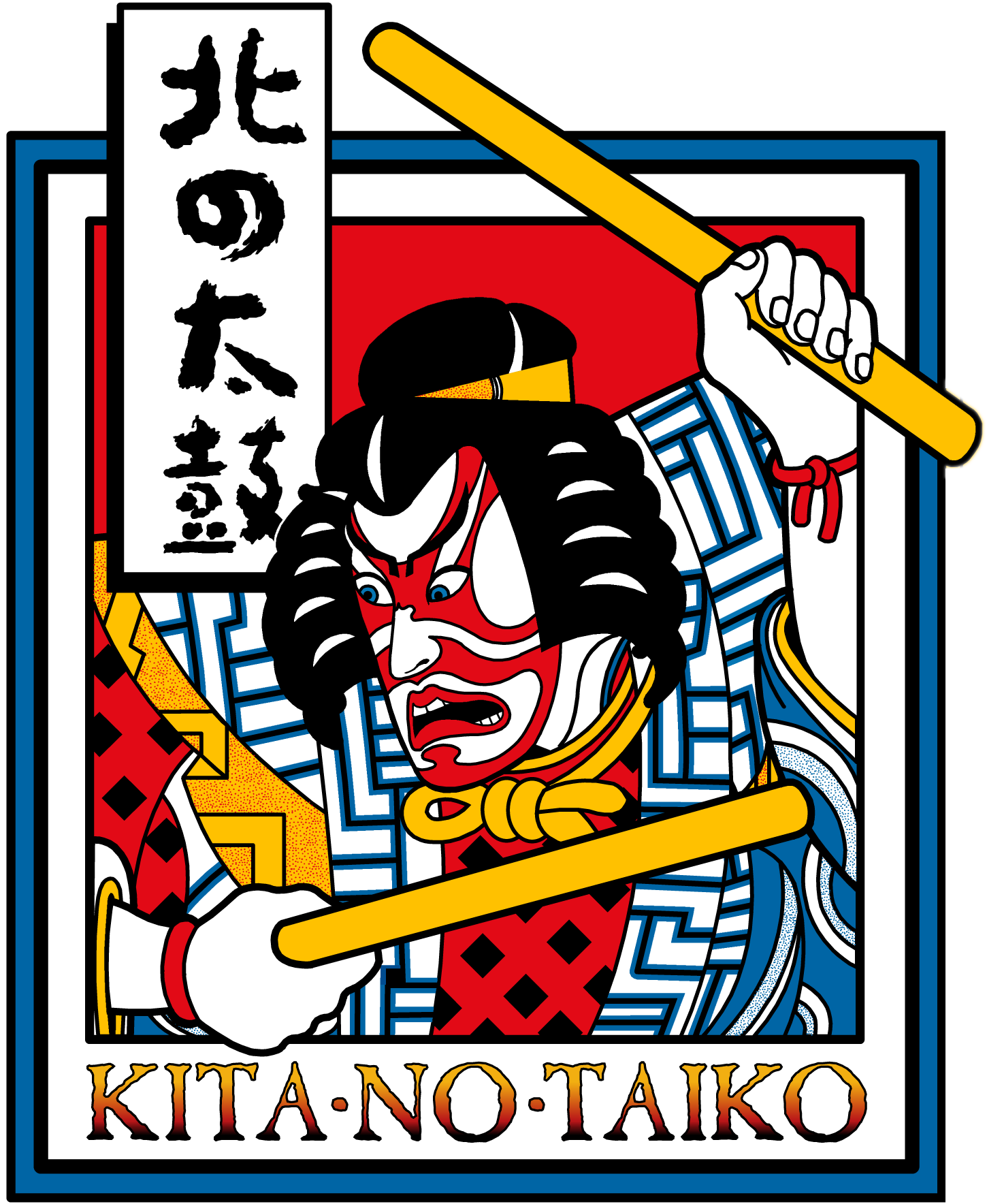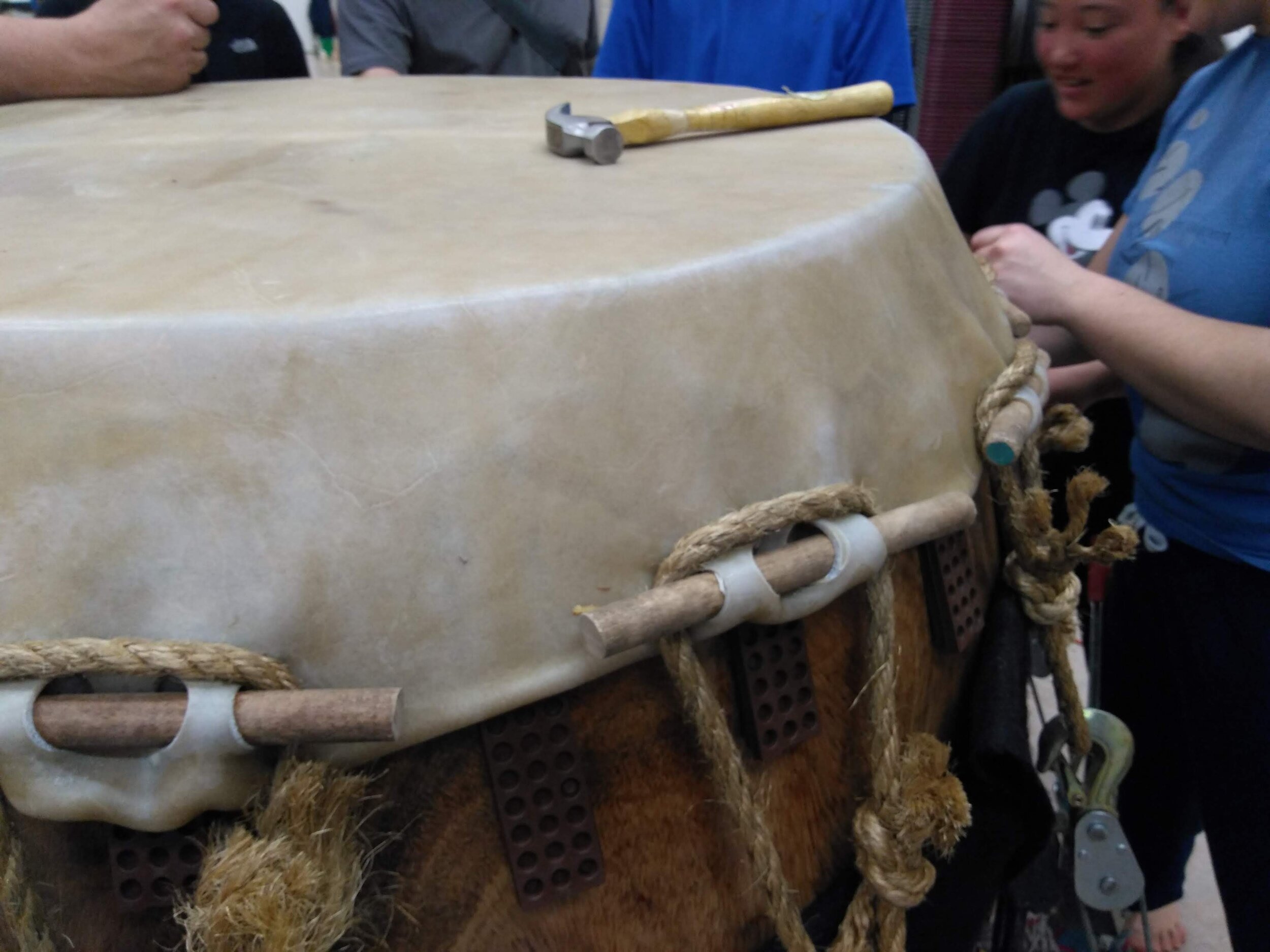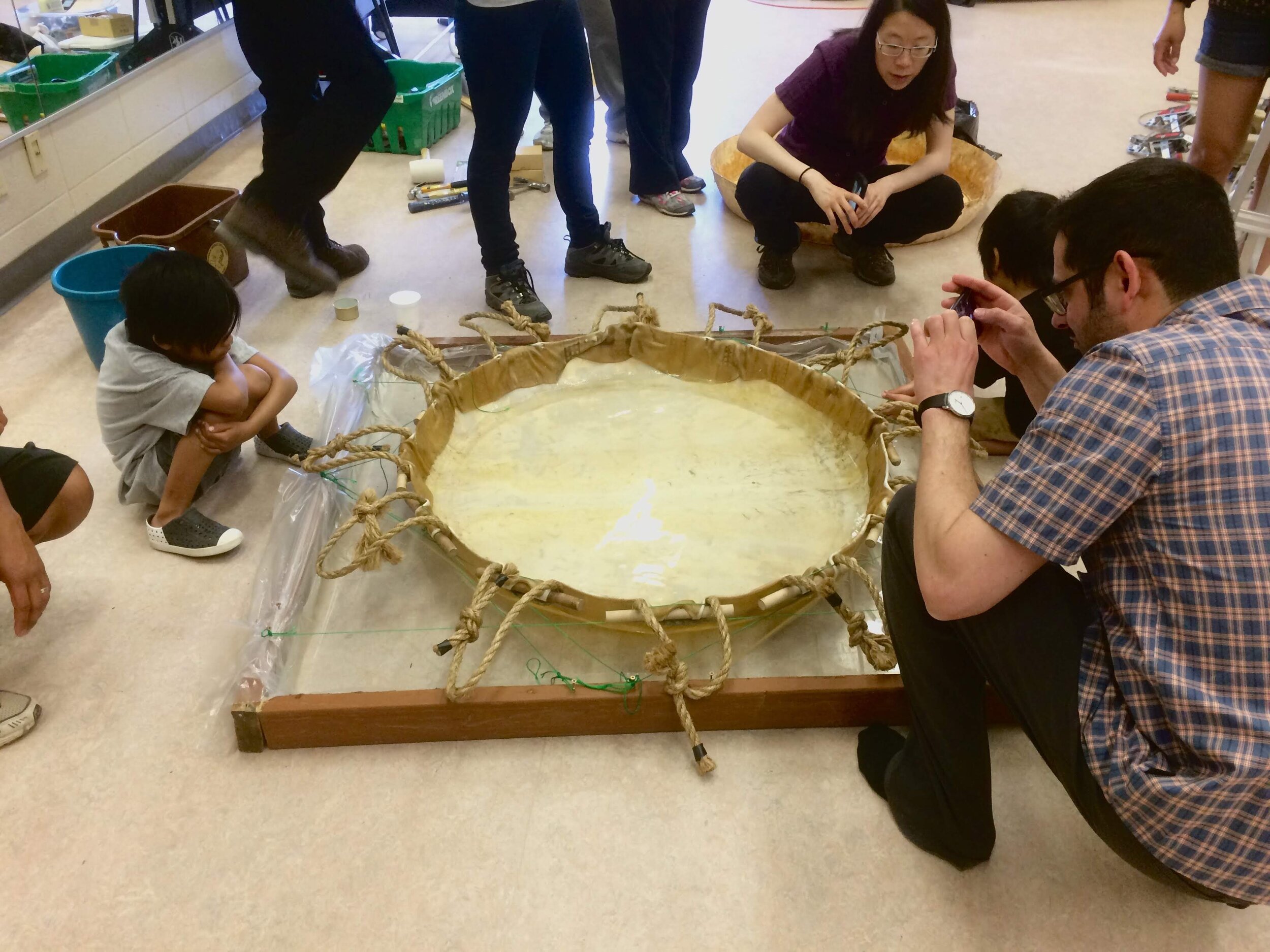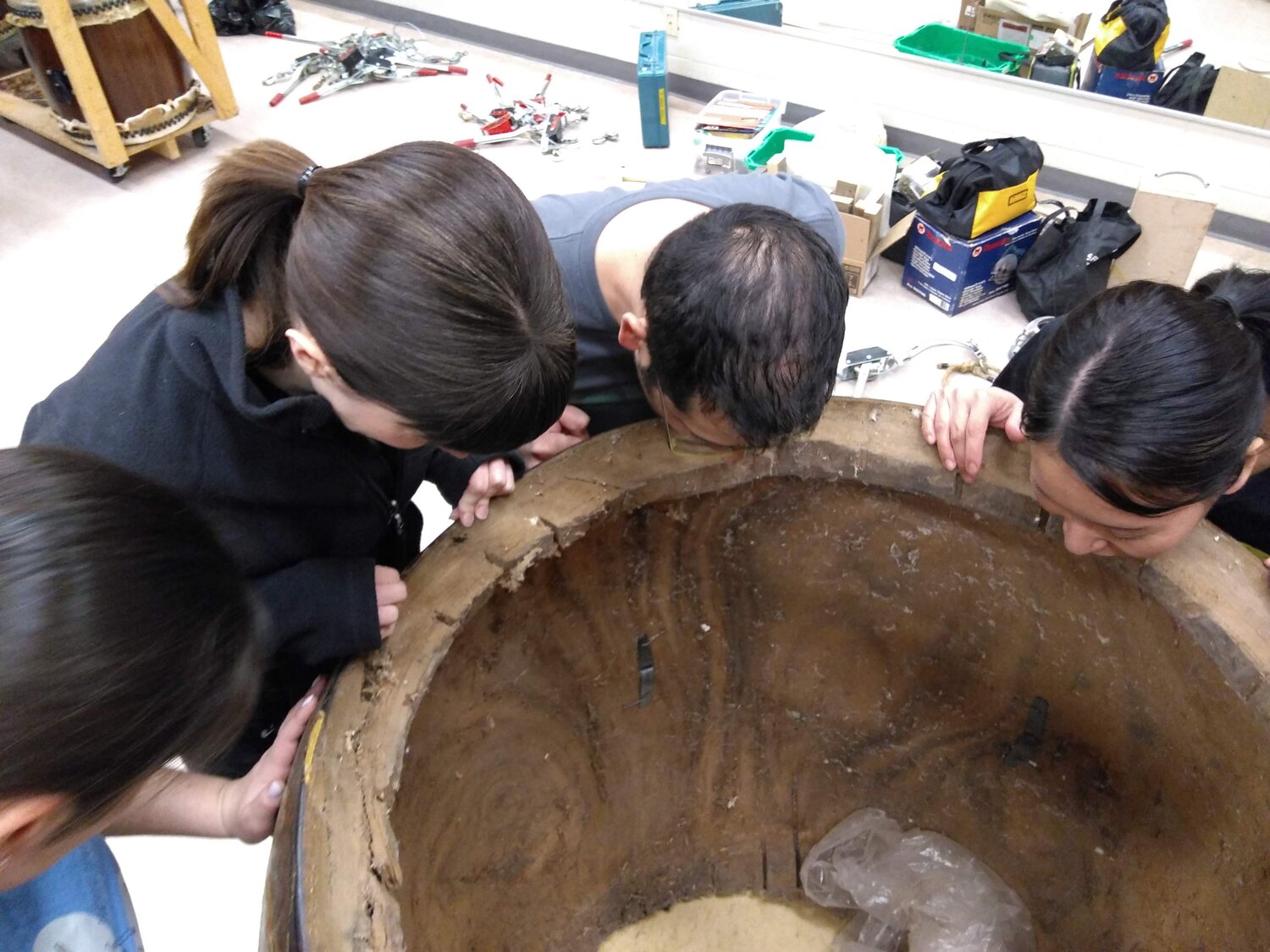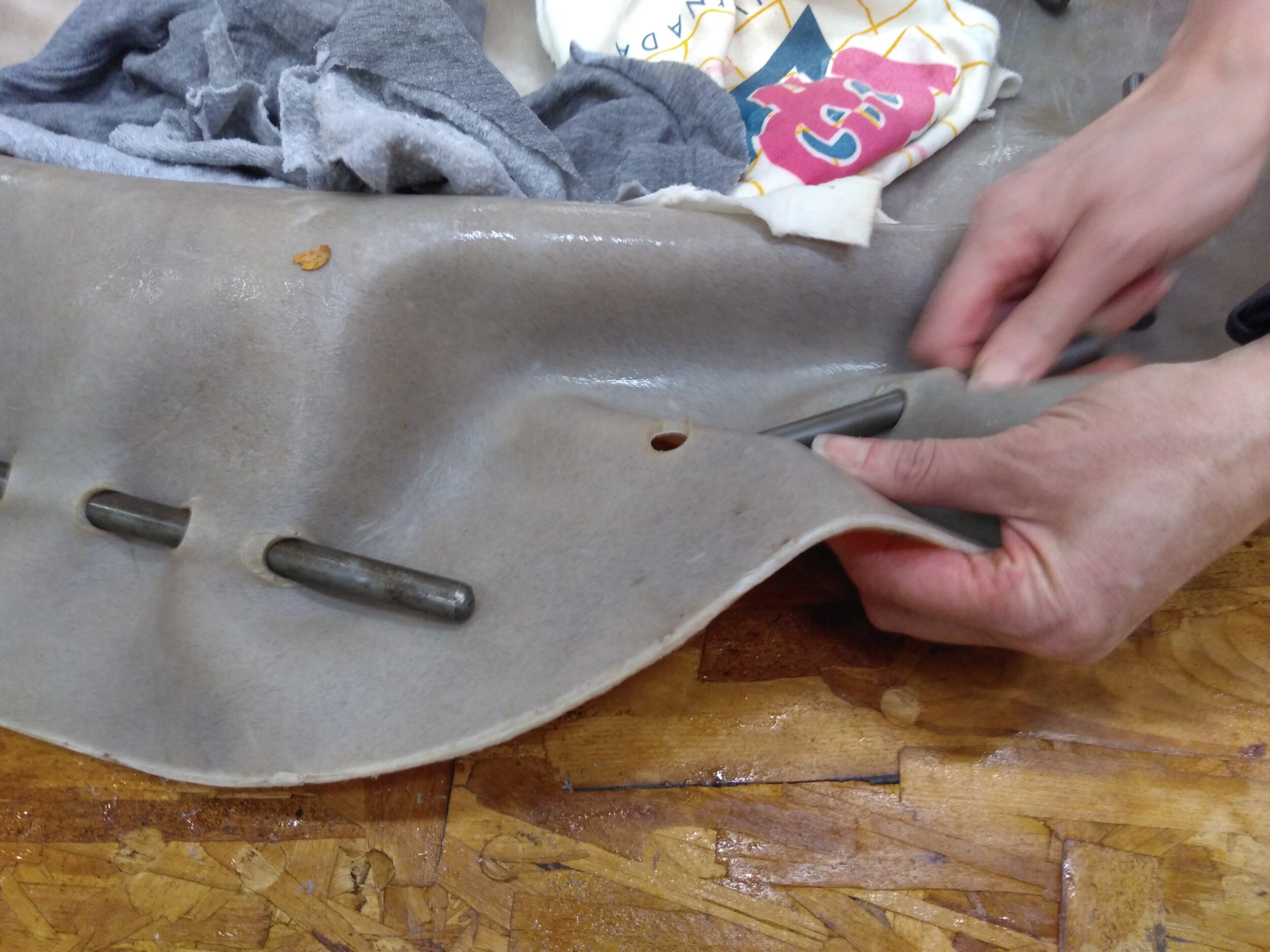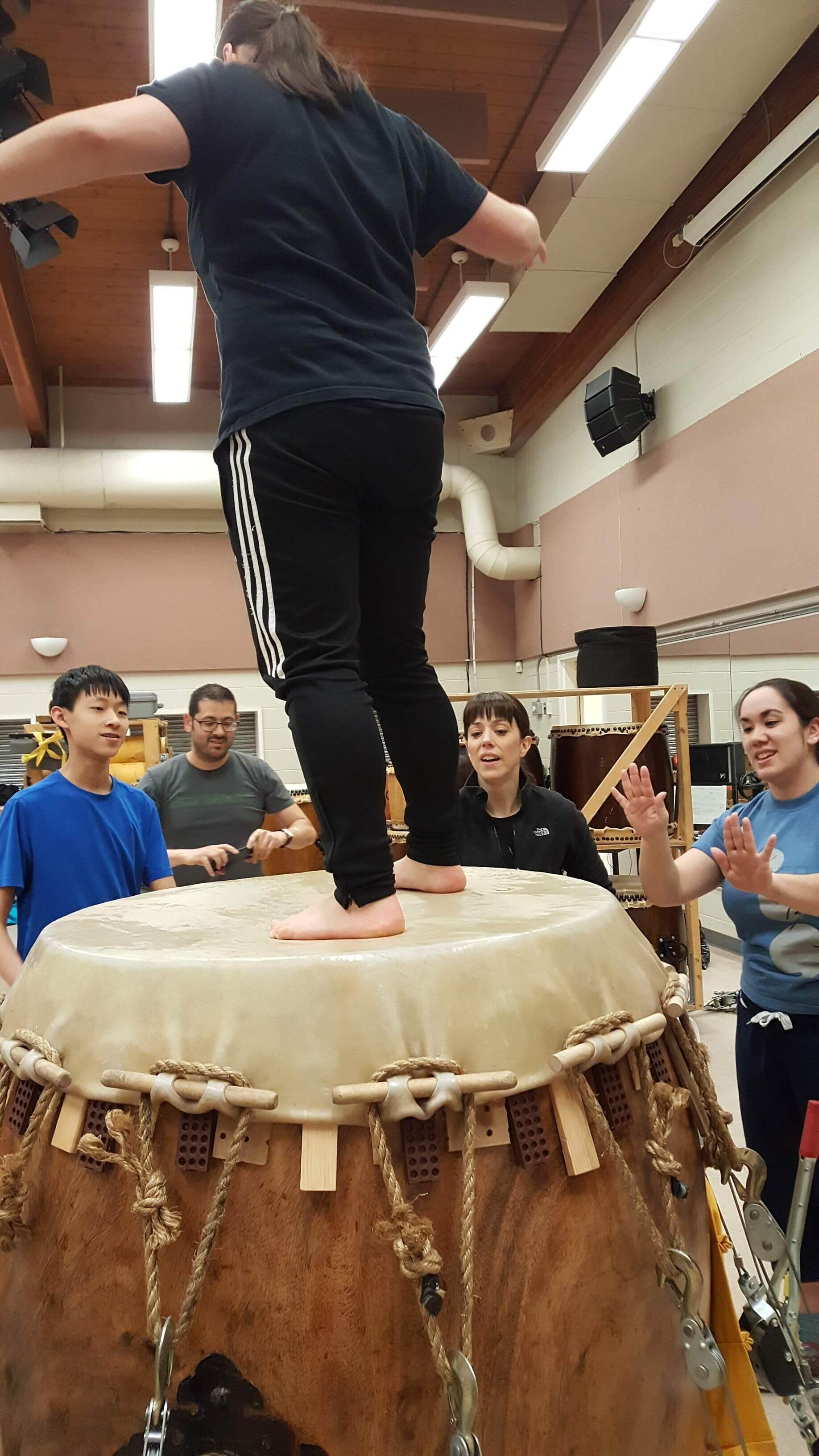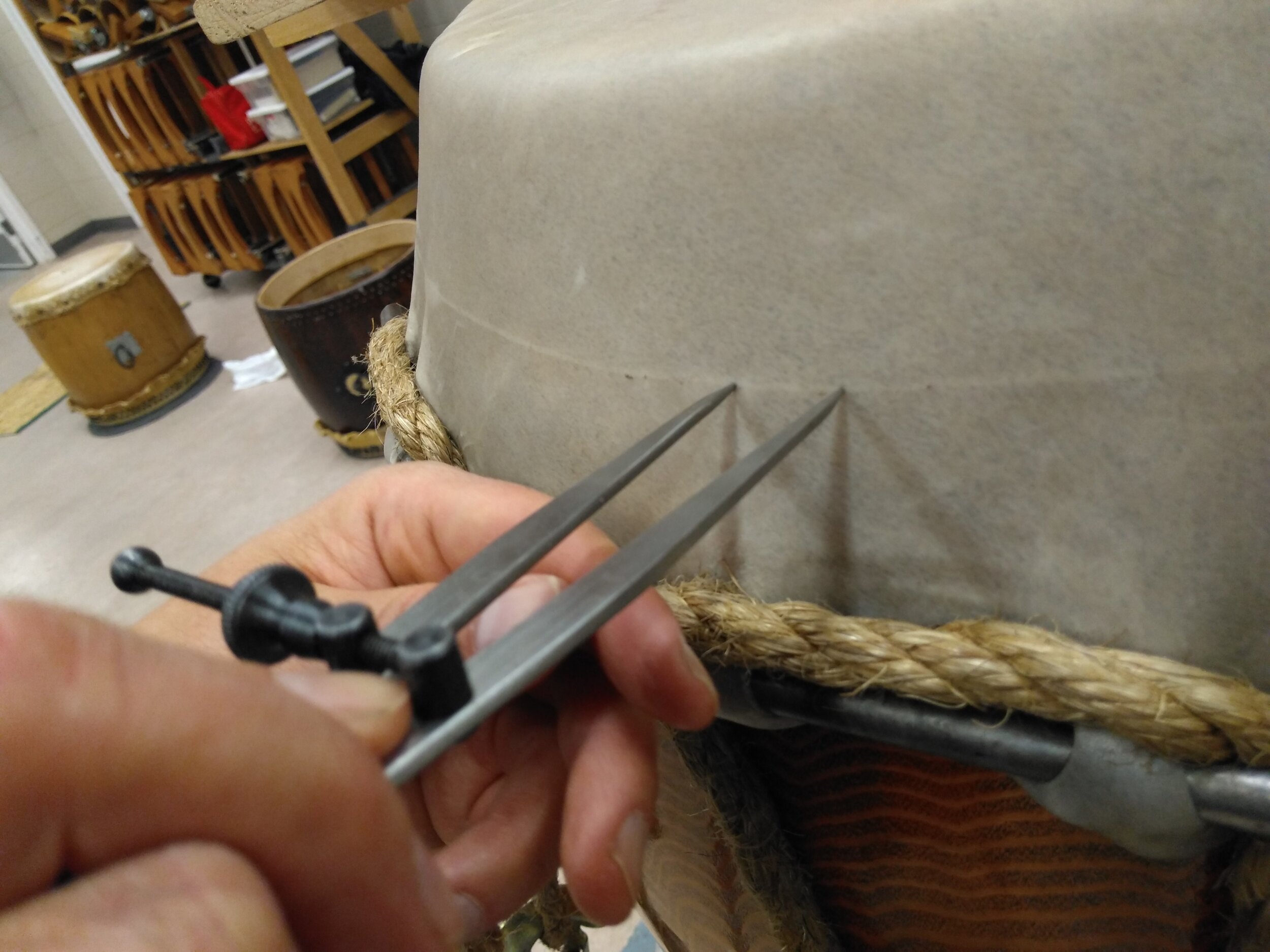Our drums
Taiko is the Japanese word for drum. Our group is very grateful to own professional equipment gathered over our multi-decade history. Our drums come from master drum builders Asano Taiko and Suzuki Taiko in Japan, and from Asano Taiko US.
Chudaiko
Most of the chudaiko, or medium sized drums, are made from a single tree trunk. However, some North American ones use wooden slats joined together. Each chudaiko weighs approximately 50 lbs.
Shimedaiko
The shimedaiko are smaller, high pitched drums. We have a mix of heavier ones that are made of cowhide just like the chudaiko, and lighter ones with synthetic material heads. Their tension is kept taut using rope.
Odaiko
The most iconic drums are usually the big ones! KNT is proud to have one of the largest odaiko in North America. It has a diameter of 2.75 ft (84 cm) and weighs approximately 100 lbs ( 45.5 kg). Its body is a single piece of wood! We received it from Boshu Wakashio Daiko, a group that travelled to Canada from Japan in 1990. Large odaiko like these are a signature style of Asano Taiko, whose work holds the world record for largest odaiko and is shown in museums.
KNT also has an ojime daiko, which is a large drum tied and tightened with rope. It was built by Mark Miyoshi from Mt. Shasta Taiko. Because of its lighter weight, we bring this odaiko on the road to performances with us.
HIRA Daiko
In 2002, a KNT member pursued his dream of building a hiradaiko, a drum with a large diameter but a short height. His wonderful work of art is still used by us today. The deep, booming sound of the powerful hira can be heard over a whole ensemble of smaller drums, and is an exciting experience to play.
After seeing taiko performed, you can imagine that the drum heads really take a beating! Our chudaiko drums are the most commonly used, and are topped with heads made from cowhide. Every once in a while we have to replace the hides, as they acquire damage.
Repairing the drums is a great team experience, and it brings us closer to our drums too as we care for them with our own hands. Look at how the hide is prepared, removed, stretched, and held until it forms.
